Hypopitys monotropa
Hypopitys monotropa pinesap
Add to MyPlants View Locations
This unusual species of flowering plant is found in temperate regions throughout the Northern Hemisphere and is scarce or rare in many areas. At first glance, it looks like some other plant that is in the process of dying, but that is not the case. It is also called Dutchman’s pipe or yellow bird’s-nest. It is most often found growing in shaded forest areas.
The plant produces no chlorophyll and gains its energy, not by photosynthesis, but by acting as a parasite on soil fungi that in turn gain nourishment in a symbiotic relationship with the roots of nearby trees. In some ways it is similar to the more common Indian pipe (Monotropa uniflora), but is more likely to be tan, yellowish or red in color rather than white. It also has multiple flowers on each stem instead of the single flower found in Indian pipe.
The pinesap plant lacks a true stem. The only part that emerges from the ground is the branchless flower stalk (a raceme) that grows from the roots. At first, the flowers are drooping but become more erect as they develop and are fertilized. Each flower is 9-11 mm long and they are produced in clusters of 1-11 at the top of the stalk. The flower has 5 petals that form a tube but are not fused together. Much of the flower is enclosed in a scale-like bract. What appear to be leaves on the stem are also technically bracts. There are no true leaves.
The plants are smooth and yellow or tan in color. In fall they tend to be red and hairy. It has been suggested that the earlier forms might be self-pollinating. The fruit is a capsule that forms from a swollen ovary and eventually splits open to release the seeds. The stalk persists after the seeds are released.
The flower spike can grow 10-35 cm high. Because of the bizarre nature of this species, botanists have struggled to find its proper classification.
Habitat & Range
Frequent in dry to moist woods.
Present throughout the state.
Wetland code: Not classified
Phenology
Fowers in July.
Plant Codes
S-rank: No rank
G-rank: G5 (Secure)
APG/Taxonomization Info
Recent DNA evidence suggested that this species belongs in the genus Hypopitys rather than Monotropa.
Hypopitys monotropa pinesap
Synonyms: Monotropa hypopitysAdd to MyPlants View Locations

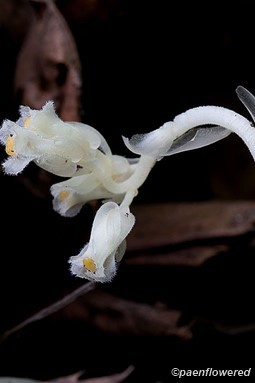
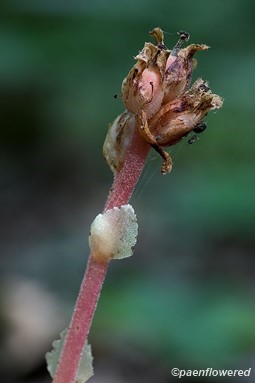
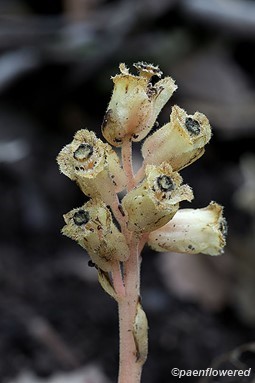
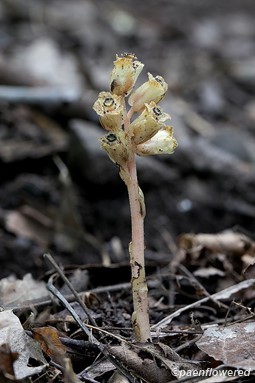
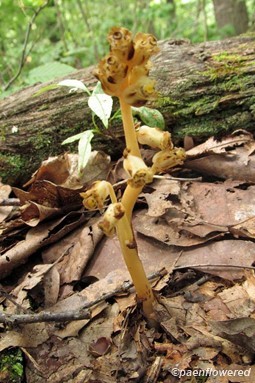
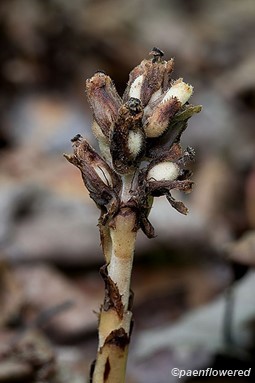
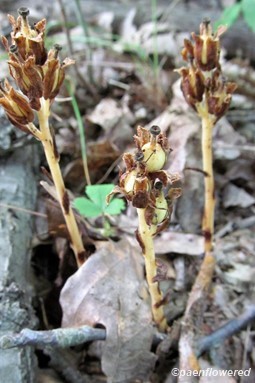


Comments
Have you spotted this plant in your area? We'd love to hear about your experience! Share your comments or questions about the plant below. Comments are moderated before posting.